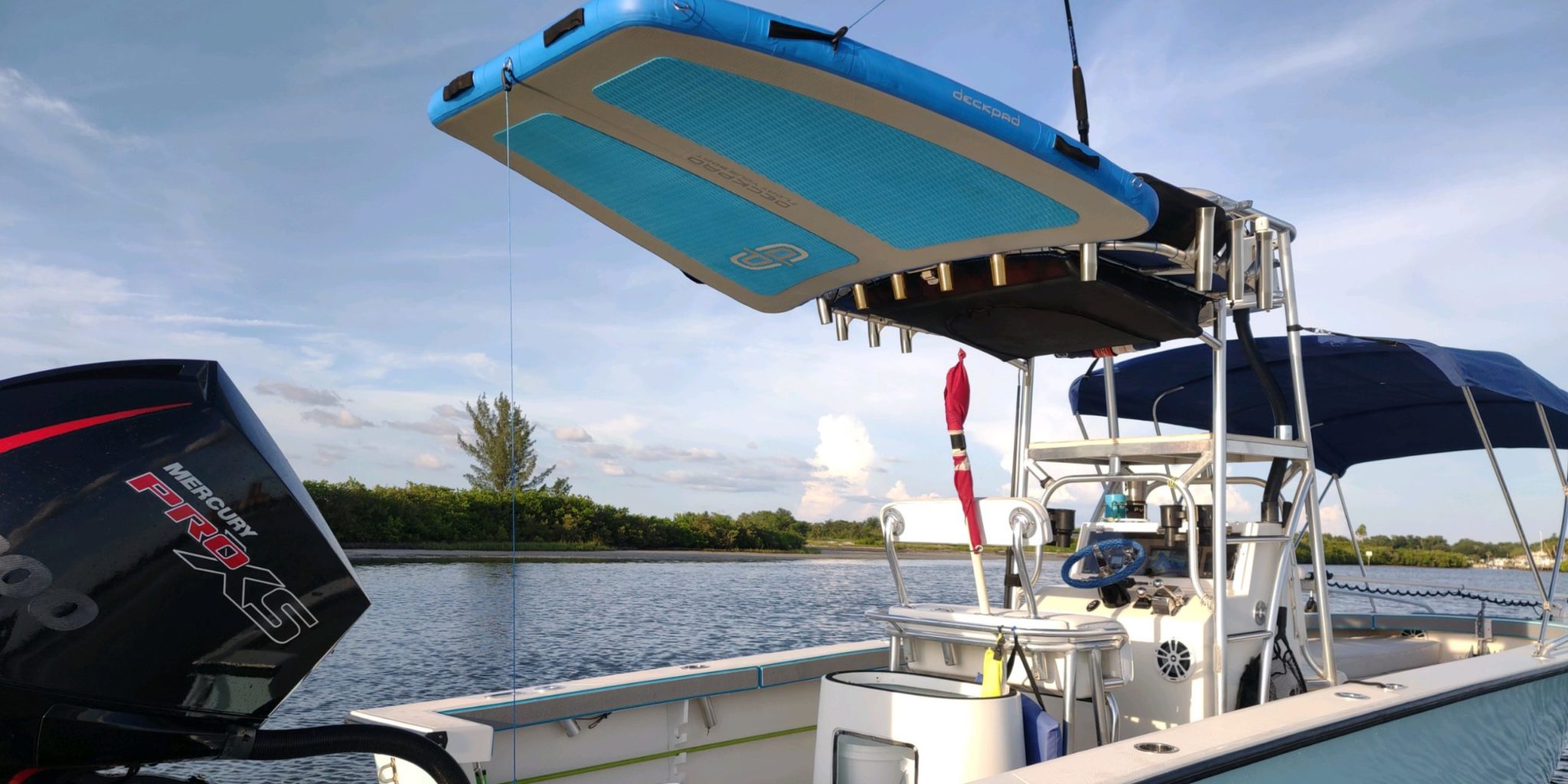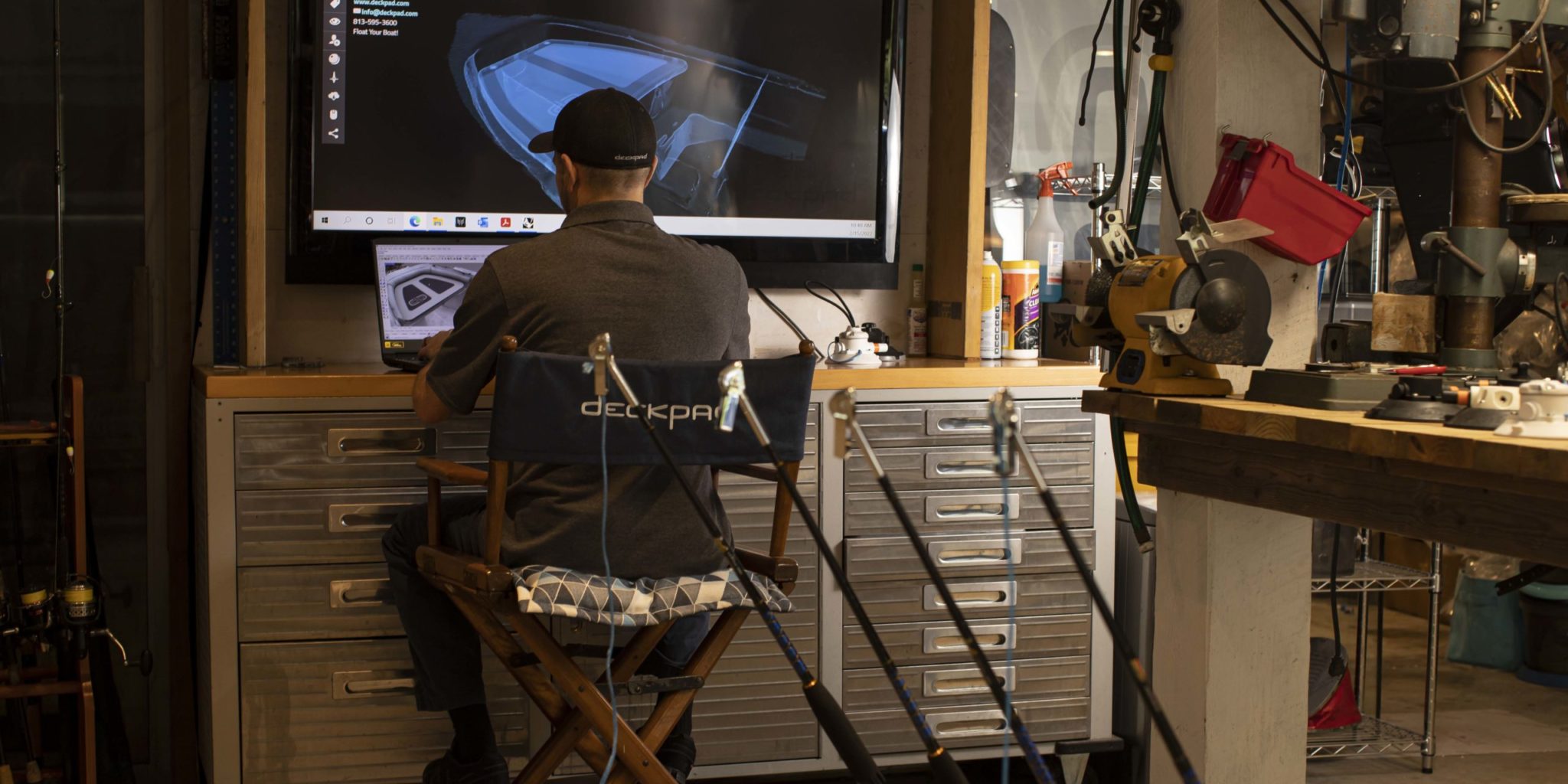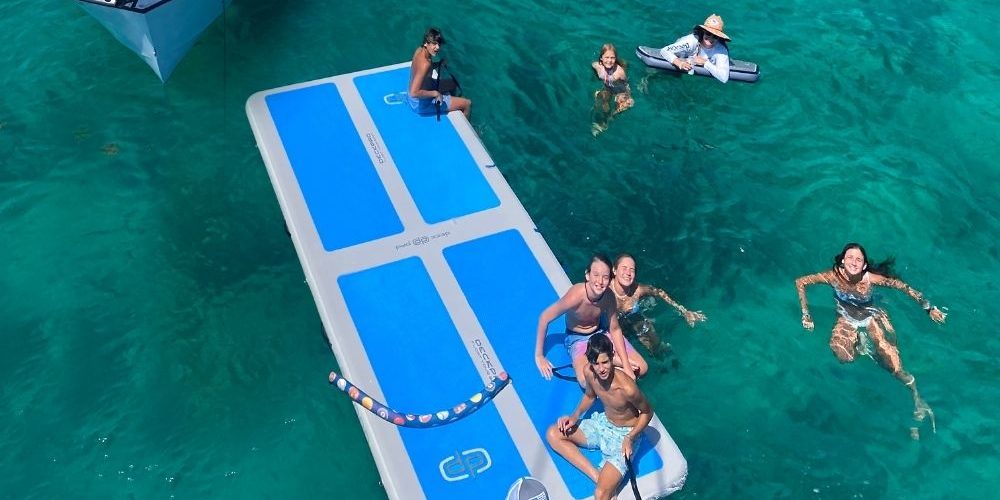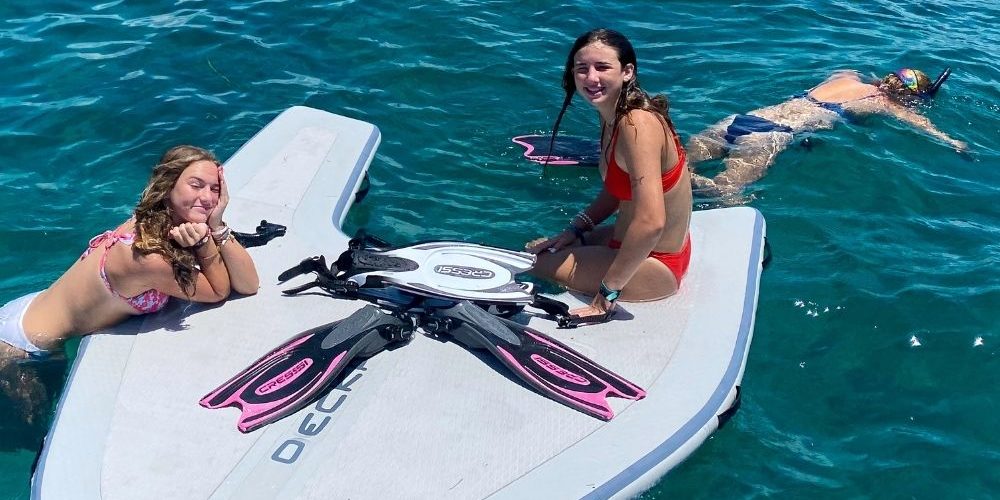Made in Tampa: Deckpad — Inflatable Ingenuity
Posted by admin on
Inventor Chris Barrs’s best idea came to him in the shower.
“It was one of those lightning-bolt experiences,” the energetic Tampa native exclaims.
Barrs, a lifelong water enthusiast, dreamt up a customizable product that solves several boating dilemmas in one. Deckpad is a versatile, compact, air-filled cushion with a non-slip surface similar to an inflatable paddleboard. It can extend T-top shade overhead, lay inside a boat as a sunpad or casting area and attach overboard as a swim platform. Plus, it deflates quickly and folds up easily for compact storage.
“The Deckpad helps people have their best boat day,” Barrs says.

Always Inventing
It’s no surprise that Barrs founded Deckpad.
“I’ve always wanted to be an entrepreneur and an inventor,” Barrs expresses. “I’m a big problem solver.”
Growing up, Barrs equates his carefree childhood adventures on the water with those of the fictitious literary character Huckleberry Finn. His father, Rick Barrs, recalls watching his son grow up making propellers out of a 2-by-4s and setting up giant erector sets in the garage.
“He was always outside,” Rick recalls. “He’s always used his hands and his mind. He’s always been inventing.”
After graduating from Plant High School, Chris started college at Appalachian State University and finished at Auburn University, where he declared his major in industrial design.
“It’s halfway between art and engineering,” he explains of the major. “It takes the creative process and adds form and function to everyday products.”
Barrs rose to the top of his class and earned several prizes and internships. He designed a handheld voice recorder that compressed and played back files for Brother International. He developed a line of products for NASA that he got to test in a zero-gravity simulator before they flew on the space station. For his senior thesis, he created a sit-on-top kayak-style kiteboarding boat. Quite the innovator, he taught himself to kite surf in a hayfield being towed in a kayak by a truck.

After college, Barrs moved to Maui, Hawaii, to take a job designing kitesurfing equipment for Naish. A relationship brought him back to Tampa, where he became an industrial designer for an architectural firm, working on furniture, museum exhibits and more. Next, he helped design and oversee Hurricane Simulators, which were installed in museums and other attractions across the world. But that business slowed during the pandemic, while the boating industry thrived. So in 2020, Barrs quit his day job to give Deckpad his full attention.
“This was my dream to start a lifestyle brand in the outdoor equipment industry,” Barrs says. “I saw an opportunity to create a niche product that hadn’t been done, and I enjoy riding the tip of the spear of innovation.”
In The Details
As Deckpad’s only full-time employee, Barrs enlisted the help of his father, Rick, retired from Florida Playground & Steel Co., as well as a few contractors. Together, they make Deckpad a reality.
Each order starts with a consultation where Barrs learns the customer’s priorities. Then, he takes a 3D scan of the client’s boat – if he hasn’t already scanned that model into his library. Through an app on his iPad, Barrs uses the newly available LiDAR sensor to collect over half a million data points. Barrs has been working with the developer to improve the process and beta test its next generation. After many hours of practice, he has gotten the scanning process down to 20 minutes per boat. He hopes to develop a system where customers can scan their own boats and participate in the design process. Augmented reality already projects Deckpad designs into boats to help customers visualize the end product.
Boaters can customize the color, shape, size, thickness and handle locations of their Deckpad. They can even add their boat’s name or logo. Every Deckpad comes with a carry bag, patch kit, manual pump and 18-month warranty on the inflation system. “They’re pretty abrasive-resistant and durable,” Barrs says. “But if you sink a hook in it or drop a dive knife on it, it’s very patchable.”
If the Deckpad is being used for shade or as a swim platform, an add-on accessory package comes with poles and suction cups to secure it in place.
Deckpads’ bases are created with a PVC-based material overseas, where Barrs sends the production files. Once Barrs receives the bases, he and his dad put hours of custom handiwork into bringing each product to the finish line, sewing, drilling, gluing and tying items like ropes, bungee cords, suction cups and poles to help attach the Deckpads to the boats for their different uses. He purchases many of them from Bradenton-based SeaSucker.
“We’re combining existing products in unique ways to produce accessories that have novel functionality,” Barrs says.
For instance, modified suction cups help secure Deckpads at the water line, a solution that’s highly preferred to having to add permanent hardware or holes to the hull. Currently, it can take one to three months from order to delivery, which Barrs anticipates quickening as he expands his inventory, as well as his library of 3D scans.

Tarpon Springs-based Dorado Boats was the first boat manufacturer to incorporate Deckpads as a factory option. The family-operated business of 36 years specializes in 23- and 25-foot custom fishing boats. Office Manager Andrea Garcia first saw Deckpad on Instagram, reached out to learn more and was impressed with Barrs’s customer service. She purchased 10 of them.
“It’s really innovative,” Garcia says. “We offer cushions for the front of our boats, but Deckpads are versatile, retail for the same price and they don’t blow away. I have a customer who lost two cushions – twice – and is trading them in for a Deckpad because it makes more sense. Plus, they inflate and deflate really fast and are really easy to put away; the cushions you have to find space to store.”

Deckpads have another leg up over cushions: They dry quickly and don’t retain water, which Jeremy Griffith appreciates. The captain of Triple Red Charters bought a Deckpad for his 27-foot Rambo and was impressed with how it fits his boat “to the tee.” He enjoys its many uses, but the fan favorite is the swim platform.
“It is a hit on the water,” Griffith says. “It becomes the center of attention when we go to the sandbar and anchor up.”
Not only is Barrs passionate about improving boaters’ lives. He also wants to improve life below the water’s surface. Thus, he started a Bucks to Bay program in partnership with Sustany to help put oysters back into the Tampa Bay estuary. His goal is to plant at least one oyster seed in an estuary per dollar of profit.

“I grew up in Tampa and want my children to enjoy a healthy estuary,” Barrs says. “This is an investment into the future as oysters clean the water, provide habitat for critters and they multiply on their own, hopefully compounding annually and paying dividends to future generations.”
Always dreaming up what’s next, Barrs has already started to evolve and expand Deckpad’s offerings, including attachable chairs and pool inflatables. Barrs is one to watch as his imagination brings new products to life in Tampa.
To read more Made in Tampa stories about local businesses, click here.
The post Made in Tampa: Deckpad — Inflatable Ingenuity appeared first on Tampa Magazine.
